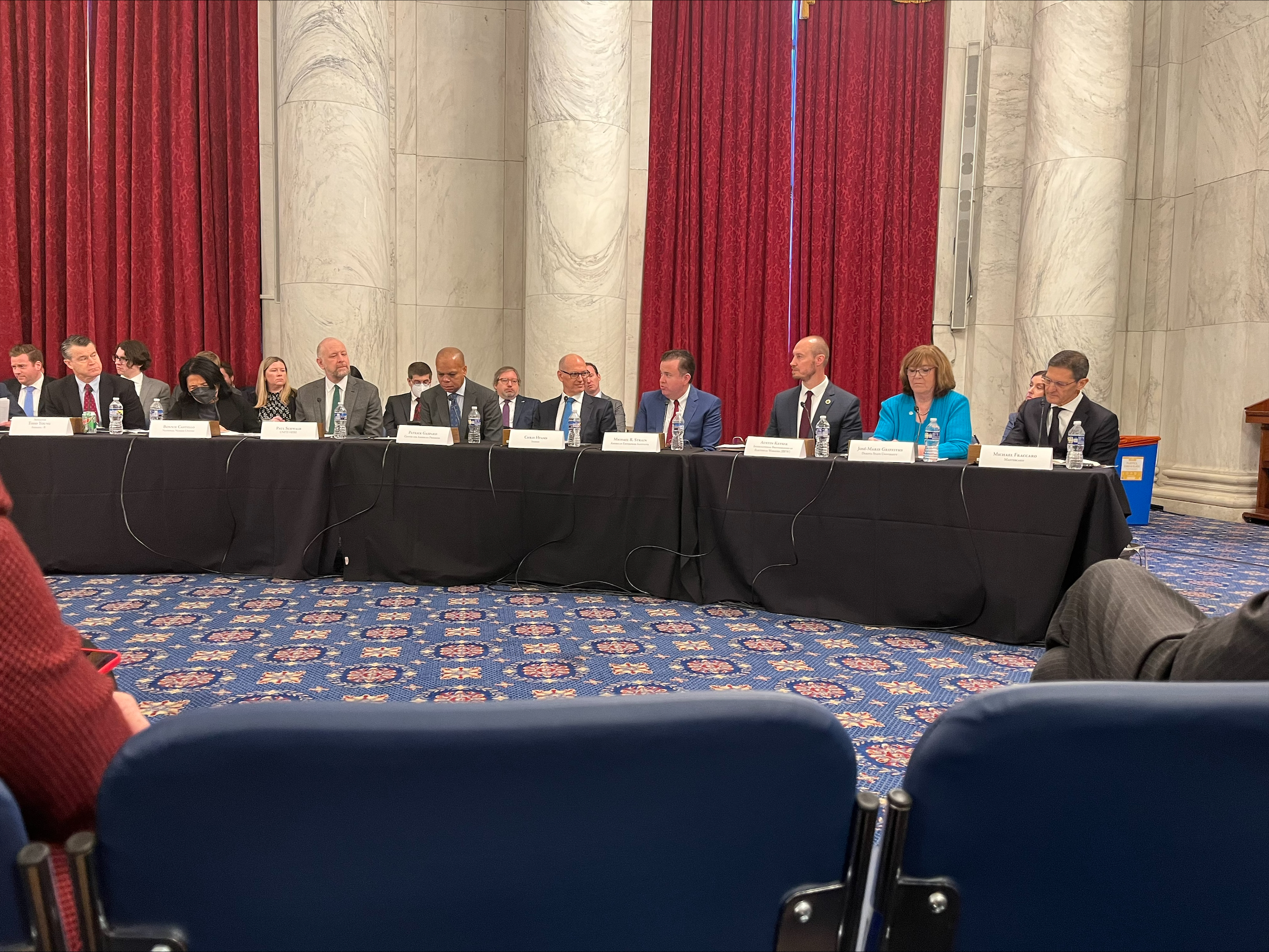Channeling and deploying rapidly evolving artificial intelligence technology has captured the attention of businesses, the Biden-Harris administration, and Congress. Senators heard the IBEW’s perspective at a high-level forum on Nov. 1 when Austin Keyser, assistant to the international president for government affairs, voiced the union’s stance.
Very few sectors of the economy or the IBEW’s wide reach will be untouched by AI, Keyser said, outlining how the technology is anticipated to affect workers across the spectrum.
“As AI’s growth and development in the workplace coincides with the increased demand for electricians stemming from new laws, the IBEW is actively considering how to harness and manage this new technology,” Keyser said.
The latest in the series of bipartisan briefings included representatives from other unions, universities, and companies. Senate Majority Leader Chuck Schumer (N.Y.), Sens. Mike Rounds (S.D.), and Martin Henrich (N.M.) hosted the briefing.
“It is imperative that we invest in sustainable innovation and put in place the guardrails needed to protect against AI’s risks,” Schumer said. “That includes protecting workers, investing in their skills, and upholding their workplace rights. Part of U.S. leadership in AI is ensuring this technology reflects our values, and central to that must be the rights and prosperity of our workers.”
In the construction branch, routine tasks like conduit bending may become fully automated in the coming years, Keyser said. The IBEW is already being affected by the large-scale use of data and electricity, with IBEW members around the country building data centers. That goes hand-in-hand with the proliferating demand for electricity to power transmission and distribution networks. Keyser said that AI will also impact distributed energy resources like solar and battery storage and will play a role in drone-assisted inspections of transmission and distribution assets, conductors, and transformers.
“There is broad agreement in the industry that this approach has the potential to identify equipment at risk of failure in a manner much faster and safer than the current method that relies on manual inspections,” he said.
While the potential benefits of AI are staggering and hard to predict, the risks are real.
“At the same time that favorable sentiment towards unions is growing in the U.S., AI threatens to undercut worker power by eliminating entire classes of jobs, while AI’s ability to monitor workers makes workplaces less democratic,” Keyser said.
Similarly, in an executive order, the Biden-Harris administration is taking a cautious approach to AI, seeking to deploy the technology for new uses, issuing new guidance advancing safety recommendations, and promoting innovation while endeavoring to protect workers by mitigating risks to job displacement.
“AI is all around us,” Biden said. “To realize the promise of AI and avoid the risk, we need to govern this technology.”
Link to this post here.



